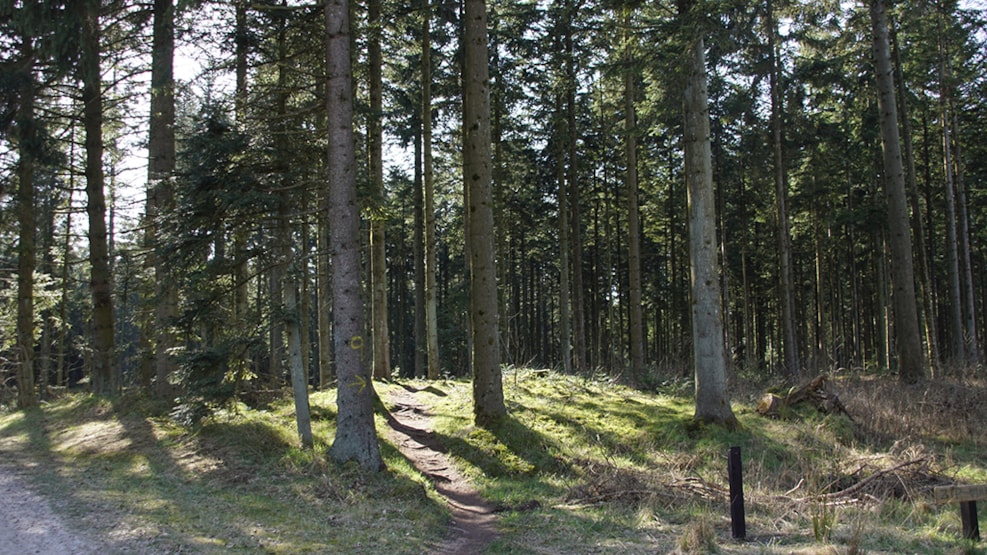
Hiking in Uhrehøje and Myrhøj Plantations
Visit Uhrehøj and Myrhøj Plantation and experience, among other things, historical burial mounds and white fallow deer.
In Myrhøj and Uhrehøj Plantation, there are 4 marked hiking trails. The cycling route Plantagestien No. 118 was created to improve access to the plantations. Plantagestien is approximately 13 km long and primarily follows small asphalt roads with little traffic and gravel forest paths.
If you're lucky, you may catch a glimpse of a red deer. Otherwise, deer, badgers, and foxes contribute to bringing the forest to life.
There are over 20 protected burial mounds in the plantations. The view from the burial mounds is magnificent. The age of the mounds ranges from 4,000 to 500 BC. Most of the mounds have been used for burials for generations. Despite no excavations having taken place, several artifacts such as beads, axes, and vessels have been found in the area.
The area where Uhrehøje is located is characterized by both the glacial moraine landscape and sand drift from the sandy meltwater deposits. Today, the area is planted with large trees, making it difficult to see how hilly the forest is. However, in several places along the hiking trails, you can sense the natural forces of earlier times and see the hilly terrain. When the ice retreated, large blocks of ice also broke off here, which were later covered by meltwater deposits. They lay frozen until the rise in temperature eventually melted them. Tandrup Lake is an example of a kettle hole lake.